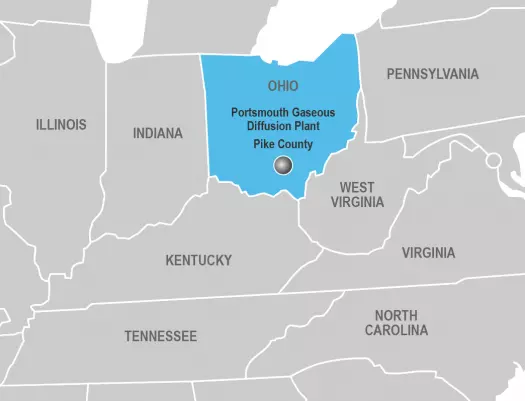The team won the contract to build the first cell in March 2019, and prior to that performed a variety of site preparation work, including roads, utilities, sedimentation ponds, cell construction and erosion control.

The OSWDF is a specially engineered disposal site with a multi-layer liner and cap system designed to consolidate demolition debris and rubble into one centralized confined space that protects public health and the environment. More than 1.4 million cubic yards of waste and demolition debris from the three massive uranium process buildings at PORTS will be placed in the OSWDF, which will have an overall capacity of more than 5 million cubic yards in its 10 cells.
To get a better look at planned D&D of PORTS and what the site expects to look like in 2025 and then in 2039
In 2020, VNSFS also won a contract to prepare the first process building, the X-326, for demolition by constructing a Water Detention System around it. That project is expected to be complete in the spring of 2021.
PORTS was built in the mid-1950s to enrich weapons-grade uranium during the Cold War. As the plant’s mission changed over the years, it later began enriching uranium for nuclear power generation. In 2001, the plant was placed in a state of cold standby, and in 2005, the plant went into cold shutdown to prepare for D&D.
VNSFS, through one of its legacy companies, has been an integral part of DOE’s nuclear cleanup programs at PORTS for two decades, including six years as the prime Facility Support Services contractor.
Since 2000, VNSFS has supported the PORTS D&D in the following areas: Roads & Grounds, Safeguards & Security, Facility Management, Waste Management, Fleet Services, Records Management, Worker Training, Computer & IT Services, and with development of regulatory decision-making documents.
In addition, VNSFS has also provided engineering technical support; facilities and structures D&D; regulatory compliance; integrated site operations; environmental remediation; construction, renovation and asbestos remediation; ESH&Q support; energy sustainability assessments; stream and wetlands assessments and mitigation plans; data validation; GIS and hydrologic modeler support; nuclear operations support; hazardous waste management; and environmental management.





